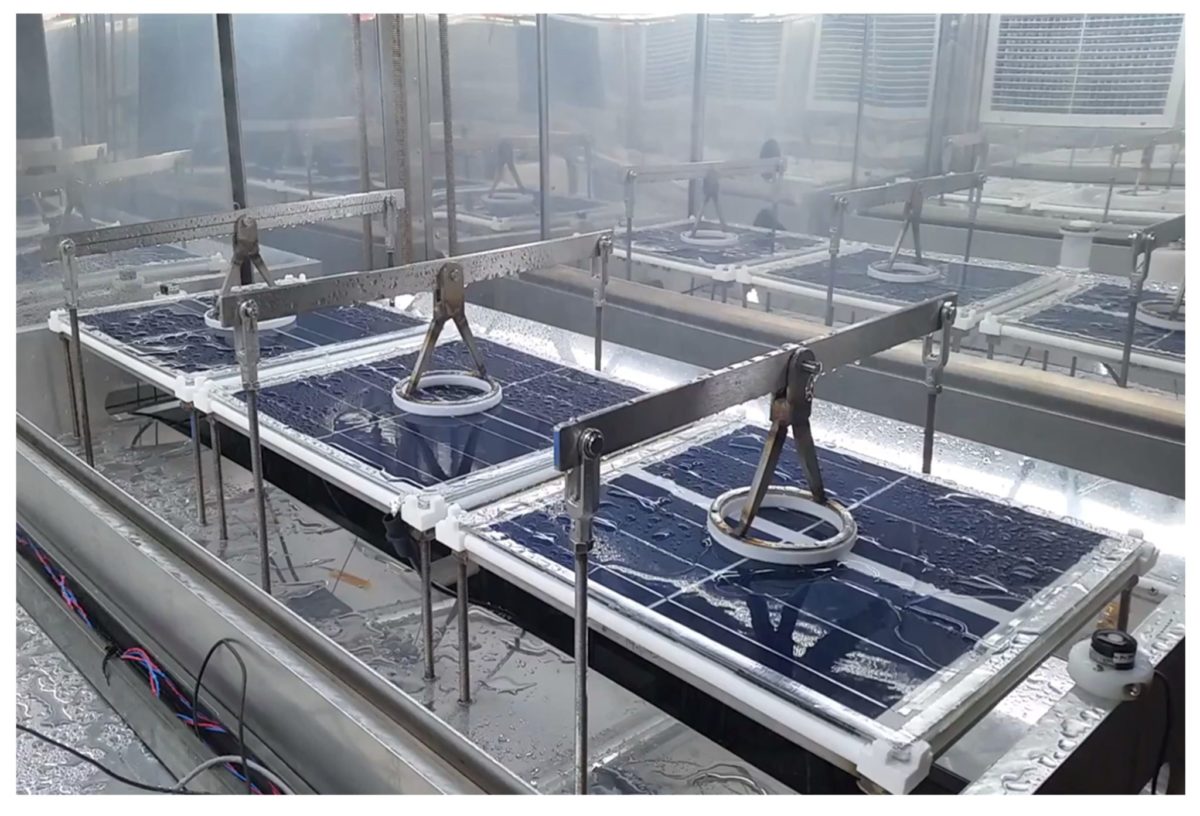From pv magazine global
In the field, PV modules have been observed to degrade and lose performance in a variety of ways. And the fast-moving nature of the technology often means new problems are being discovered as fast as the old ones are being solved.
Detailed standards exist to set a minimum standard for industry entry, however, it is widely acknowledged fall short in some areas, particularly when it comes to spotting new or little-understood degradation mechanisms. “Standards are not intended to serve as a guarantee of quality or reliability,” state scientists from the U.S. Department of Energy’s National Renewable Energy Laboratory (NREL) in a newly published paper. “…the industry has been forced to design standards around known failures, as opposed to developing a more comprehensive testing regime that could detect unexpected failure modes more frequently.”
The group led by NREL set out to create such a comprehensive testing regime, focused on mimicking the overall natural environment modules are installed in, rather than pushing the limits of one particular failure mode. “Of great value to the industry would be a test that would provide more comprehensive identification of failure modes in new module designs and materials prior to field deployments,” the group states.
Key to the development of a testing protocol is the ability to simultaneously apply different stress factors to the modules. With this in mind, the group combined a climate chamber with xenon lamp solar simulators, hydraulic actuators for mechanical loading and power sources to apply voltage stress to the modules. The set up is described in the paper Advanced reliability assessments of photovoltaic modules and materials using combined-accelerated stress testing, published in Progress in Photovoltaics.
Backsheet cracking
To demonstrate the effectiveness of its protocol, the group compared it’s combined-accelerated stress testing (C-AST) results with the Module Accelerated Sequential Testing (MAST) protocol developed by DuPont to test the reliability of polymer backsheets, noting that backsheet is a common failure mode not well covered by current testing standards.
C-AST was shown to produce similar results to MAST in terms of backsheet cracking, while also producing reliable results for light induced degradation, cell cracking, soldering failures, corrosion and other issues. And the group is confident that its testing could be adopted as an industry standard in the future. “With the single C-AST protocol, we have the ability to screen for both known and unknown degradation modes, providing the possibility to minimize the many tests in the design qualification standard when used in conjunction with a single test protocol,” they conclude. “Potentially reducing the cost of certification testing and accelerating time to market.”
This content is protected by copyright and may not be reused. If you want to cooperate with us and would like to reuse some of our content, please contact: editors@pv-magazine.com.









By submitting this form you agree to pv magazine using your data for the purposes of publishing your comment.
Your personal data will only be disclosed or otherwise transmitted to third parties for the purposes of spam filtering or if this is necessary for technical maintenance of the website. Any other transfer to third parties will not take place unless this is justified on the basis of applicable data protection regulations or if pv magazine is legally obliged to do so.
You may revoke this consent at any time with effect for the future, in which case your personal data will be deleted immediately. Otherwise, your data will be deleted if pv magazine has processed your request or the purpose of data storage is fulfilled.
Further information on data privacy can be found in our Data Protection Policy.